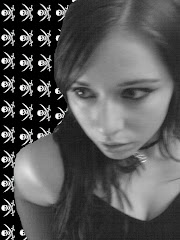Cinematography
The film ‘Ghost world’ uses a lot of cinematography to help the audience to understand and relate to the characters. Most of the camerawork is done in rapid, changing motions so as to signify the rapidly changing lives that Enid and Rebecca have been thrown into by growing up and leaving high school.
The camera begins this sequence by pointing slightly diagonally upwards at Enid, as though we are in the frame, looking at her ourselves.
This scene is towards the end of the film. Enid is proving to Seymour how much he has meant to her by showing him the contence of her sketches – him. This scene is done in a rapid shot-reverse-shot montage which begins with Enid and is compiled of a shot of a sketch, and then Seymour’s reaction to it.
The next time the camera raises to see the reaction of the characters, it shows Enid and Seymour together. It is a centre side shot which places them both in the middle of the frame.
The camera looks diagonally downwards at the sketch book.
The effect of this shot places Enid with a slight authority over us, and over the other character, Seymour, who is in the frame.
The effect of this shot-reverse-shot is mirrored throughout the film, and signifies the speed and intensity with which Enid and Seymour’s relationship grew. This scene is the parting scene for the two, and so their good byes are done in the manner in which their whole relationship was done.
Throughout the film the camera has mostly followed Enid, and this centre side shot which places both of them with equal value, shows that Enid has grown. She is no longer childish and attention seeking, but understands others value and worth.
This is done to signify where Seymour’s eyes are looking. When the camera is looking at Seymour, it is as though we as spectators are in the frame, and are looking at him ourselves. But when it reverses, it shows us the scene through Seymour’s eyes.
This shot allows us to follow Enid. We have followed her trail throughout the film, and the film feels fully concluded as we repeat the action to watch the finale. It is a simple camera movement, and ensures the spectator feels involved with the character and effectively concluded.
Finally, the camera cuts to Enid
walking out of the hospital where she is visiting Seymour. It pans with her as she approaches Rebecca, her friend, and follows her journey to the bench
.
Subscribe to:
Post Comments (Atom)

No comments:
Post a Comment